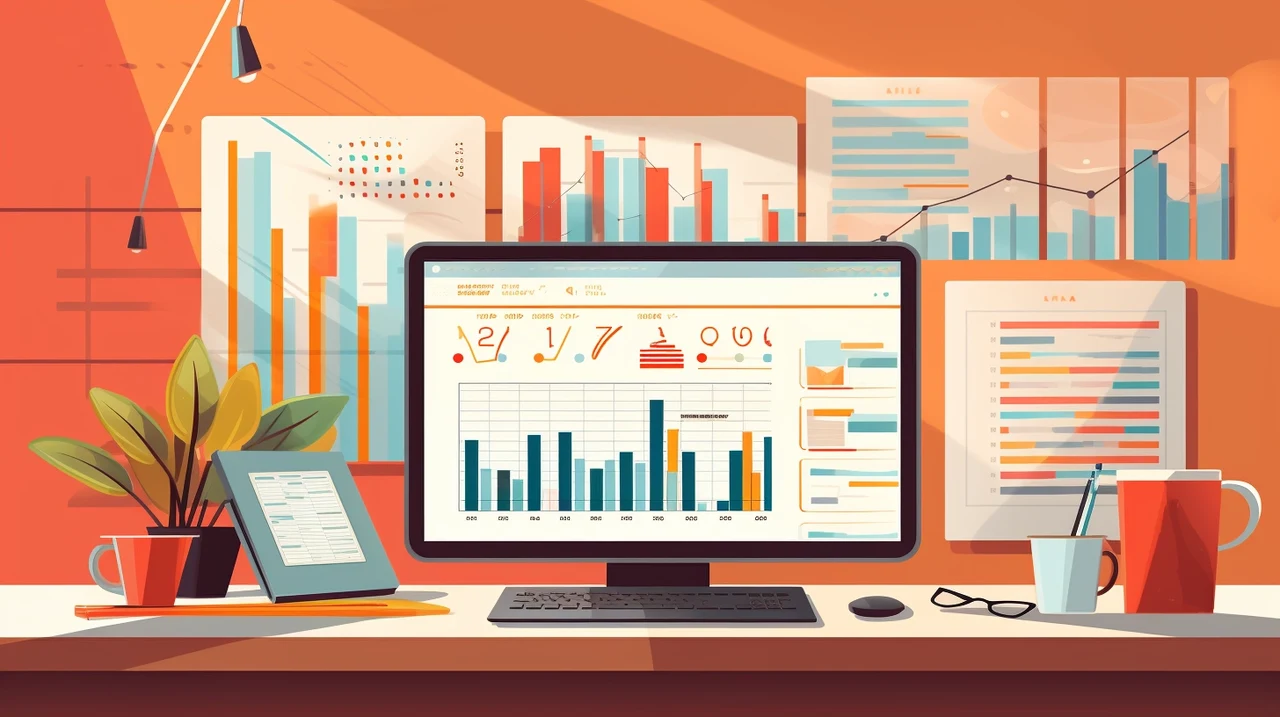
If you are searching for new ways to take your social media, documents, content or report writing to the next level this quick guide will provide you with an overview on how you can improve your content creation workflow by harnessing ChatGPT, Claude 2 and other AI tools. Remember the technology powering ChatGPT is continually evolving and the prompts you use define your results. Don’t fall into the trap of using the same prompts again and again. Continually tweak and enhancing your AI prompts to improve your content creation and results.
A technique known as multi-shot prompting is often employed with ChatGPT, providing the AI with a series of examples or prompts, which it then uses to generate new ideas. This approach to idea generation is not only efficient but also allows for a diverse range of ideas that might not have been conceived through traditional brainstorming methods. ChatGPT has become a reliable partner for generating ideas and brainstorming for your social content or developing a business strategy, the AI can assist by providing an array of possibilities and thought-provoking questions.
Using AI to improve your content creation
The conversational AI features of ChatGPT can further optimize your existing AI-powered workflow. This can be achieved through additional tips and tricks, as well as by highlighting areas you may have overlooked. check out the video below to learn more about how the AI Advantage team harness ChatGPT to improve their content creation, workflow and more.
A/B Testing Content
A/B testing is a technique commonly employed to evaluate the effectiveness of different content variations. In the context of ChatGPT content creation, ChatGPT can be an invaluable tool for generating alternative versions of headlines, call-to-actions (CTAs), or even entire articles. For instance, suppose you’ve created a landing page for a new product. The success metrics could range from user engagement time to actual conversions.
ChatGPT can quickly produce multiple sets of headlines and CTAs that emphasize different aspects of the product—some may focus on price, others on quality or usability. Once these alternative content pieces are in place, they can be tested in real time with actual users. The performance data then becomes actionable insights, helping you understand which messaging resonates most effectively with your target audience. By continuously optimizing through A/B testing, businesses can make data-informed decisions to improve their content strategies.
If you are wondering how to scale this process, deploying multiple ChatGPT agents for a brainstorming session can add another layer of sophistication. Imagine an ensemble of AI-powered brains riffing off one another to provide you with a more nuanced and comprehensive list of ideas, using something similar to Microsoft’s AutoGen framework or AutoGPT. It’s like having a virtual team of creative experts at your beck and call.
Creating an advertising campaign using ChatGPT
the example below might be geared specifically for Facebook advertising but you can use the same principles across a wide variety of different advertising platforms allowing you to target certain areas or niche is perfectly.
Other articles we have written that you may find of interest on the subject of data analysis :
ChatGPT Content Creation and Data Analysis
If you have large documents you need to read or process to construct further documents you can use AI to help you summarize important aspects allow you to improve your workflow and productivity. While tables and charts provide the ‘what’ and ‘how,’ storytelling provides the ‘why.’ with OpenAI’s latest ChatGPT Vision you can upload graphs, images, photographs and more all of which can then be analyzed and processed by ChatGPT as if it was looking at the document
Imagine you have a dataset showing quarterly sales figures for multiple products. Instead of just displaying bar charts or pie graphs in a presentation, you can use ChatGPT to create a narrative around the data. For example, the model might generate text that highlights how one product’s sales have consistently risen each quarter, correlating with particular marketing campaigns, while another’s have dropped due to supply chain issues. This narrative can serve to make the data more memorable, and can also help in shaping future business strategies. Such data stories can make analytical reports much more compelling and easier for stakeholders to understand.
Adaptation for Different Platforms
In today’s multi-platform digital landscape, content rarely lives in just one place. A blog post can be turned into a podcast script, a series of tweets, or even an infographic. This is where ChatGPT can offer considerable value. Let’s consider a practical example: you’ve just written a comprehensive blog post about the benefits of solar energy. This single piece of content can be adapted for various platforms with the help of ChatGPT.
For a YouTube video, the model can help draft a script that transforms the text into a more conversational tone suitable for verbal presentation. For social media snippets, it could extract key facts or interesting tidbits and reframe them as standalone pieces of content. In each case, the core information remains the same, but the format and tone are optimized for the specific platform’s audience. This kind of adaptive content strategy not only maximizes reach but also ensures a consistent brand message across platforms.
In addition to OpenAI’s ChatGPT, advanced data analytics tools are also used for idea generation enabling you to upload much larger datasets or documents using perhaps Perplexity or Claude 2. This approach leverages the power of big data and AI to turn large and complex documents into actionable insights. By easily and quickly summarizing them into more digestible chunks of information that you can process and then reimport back into your preferred AI analyzing it further.
Localization
Localization goes beyond mere translation; it involves adapting content to make it culturally and linguistically appropriate for different audiences. With increasing globalization, content needs to resonate with diverse groups of people. In this setting, ChatGPT can be quite effective.
Suppose you have a marketing campaign that you wish to run in multiple countries. Feeding the original content into the model along with specific cultural guidelines can yield adapted versions that take into account not only the language but also local idioms, social norms, and sensitivities. For example, humor that works in the U.S. may fall flat or even offend in another culture. The model can help rewrite such elements to fit the target audience. This level of localization ensures that the content is not just understood but also appreciated, increasing its impact.
Multilayered Content Strategies
In a constantly evolving digital landscape, a one-dimensional approach to ChatGPT content creation often falls short. Brands and organizations need a well-structured, multilayered content strategy that operates across various channels to effectively reach their target audiences. ChatGPT can assist in planning and executing such intricate strategies. Imagine a business wanting to launch a new product; they could use the model to outline a strategy that combines blog posts, social media updates, video content, and email campaigns.
AI could generate a content calendar, suggest themes that run across multiple platforms, or even propose how individual pieces could be interlinked to create a more compelling user journey. For instance, a blog post could be summarized in an engaging video, which in turn could be teased in a series of tweets, all ultimately driving traffic back to the product landing page.
Technical Documentation
Technical documents like user manuals, API documentation, or product specifications are critical but often complex and hard to create. ChatGPT can assist in generating drafts for such technical content based on provided specifications. While the content may still require review by experts for accuracy, the model can expedite the initial drafting process considerably.
Beyond mere text, it can also suggest diagrams or data representations that would make the document more understandable. For example, given key specifications of a software API, it can generate outline sections covering introduction, authentication, endpoints, error handling, etc., and even provide sample code snippets or suggest visual aids like flowcharts to help clarify complex interactions.
Public Relations and Crisis Management
Public relations crises are unpredictable and often require immediate and carefully-crafted communication to manage. In such high-stakes scenarios, AI can serve as an invaluable initial drafting tool. For example, if a company faces a data breach, there’s an immediate need for transparent communication to stakeholders.
Artificial intelligence can quickly generate draft statements or press releases that acknowledge the issue, clarify the extent of the impact, and outline steps being taken to resolve it. While these drafts would ideally be reviewed and refined by PR professionals, the speed with which they can be produced allows for quicker, more responsive communication, which is often crucial in crisis scenarios.
The use of AI tools for content creation, data analysis and social media content generation offers a wealth of benefits. From idea generation to content enhancement, these tools provide a more efficient and innovative approach to ChatGPT content creation. By leveraging the power of AI, content creators can stay ahead of the curve in the ever-evolving digital landscape. As well as saving valuable time and money in the process.
Filed Under: Guides, Top News
Latest timeswonderful Deals
Disclosure: Some of our articles include affiliate links. If you buy something through one of these links, timeswonderful may earn an affiliate commission. Learn about our Disclosure Policy.

